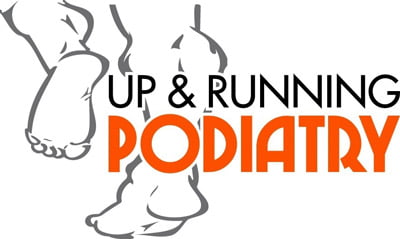Ever felt like you're standing on a tiny stone every time your heel hits the ground?
I’ve had many patients at my Melbourne clinics mention exactly that feeling. Often, it’s not just a random ache—it’s actually one of the early signs of a heel spur. While a heel spur itself isn’t always painful, it’s frequently tied to a pesky condition called plantar fasciitis. If you’ve noticed that sharp sensation first thing in the morning or after long periods of rest, it might be time to pay attention.
First Things First, What Exactly Is a Heel Spur?
A heel spur is a small bony growth under the heel bone. Imagine it like a tiny hook or spike that’s formed due to chronic strain or inflammation, usually from repeatedly stressing your foot. This stress might be from running, poorly fitted footwear, or even just standing for extended periods at work.
Surprisingly, heel spurs don’t always cause direct pain. But because they often come hand-in-hand with plantar fasciitis, it’s easy to confuse the two. The pain you’re feeling is usually the soft tissue around the heel getting inflamed, not necessarily the spur itself. I always stress this point to patients, as understanding the difference can change how we tackle treatment.
What Are the Early Signs You Should Watch Out For?
Here’s where things get personal. A lot of my patients describe the sensation differently. Some feel a sharp pain with the first few steps in the morning. Others mention it feels like stepping on something small and irritating, like a pebble or a rolled-up sock inside their shoe. For some people, it’s even described as “a knife stuck inside a rock”—painful imagery, but pretty accurate.
If you’re nodding along right now, thinking, “Yep, that sounds like me,” it might be a good moment to consider booking a gait analysis. Early assessment can stop things from escalating.
Don’t Ignore the Mild Symptoms
It’s tempting to overlook minor discomfort, thinking it’ll go away by itself. Trust me, I’ve heard it a thousand times. But here’s the catch—early intervention genuinely helps. If ignored, these symptoms typically worsen. I see it frequently, especially in active patients or people standing all day at work.
One proactive approach I suggest to my patients is considering custom orthotics. Orthotics can significantly reduce heel stress and inflammation, providing relief that over-the-counter insoles might not.
Managing Heel Spurs and Preventing Pain
Treatment doesn’t always mean drastic measures like surgery. In fact, heel spur surgery is rarely needed, and I personally advocate strongly against it unless absolutely necessary. Instead, managing symptoms early and conservatively usually works best.
One treatment that’s particularly popular and effective in my clinics across Port Melbourne, Elsternwick, and Williamstown is radial shockwave therapy. This gentle, non-invasive method has helped many of my patients regain comfort without downtime.
Another thing that helps immensely is targeted foot mobilisation and manipulation—something our podiatry team regularly uses to ease symptoms and restore foot function. You can find more details about our foot mobilisation service here.
Can You Prevent Heel Spurs?
Absolutely. Reducing stress on your feet is key. Wearing proper shoes with adequate arch support and cushioning goes a long way. Regular stretching and strengthening exercises for your feet and calves help prevent tension that leads to spurs.
I strongly recommend checking out these simple exercises you can do at home. They can really make a difference, especially if you’re active or standing frequently at work.
When Should You Seek Help?
If your heel pain isn’t improving after a few days of rest and basic care, don’t wait. Pain is your body’s way of saying something isn’t right. I’m always telling my patients—earlier action leads to faster recovery.
Reach out directly at one of our locations if you’re experiencing persistent heel discomfort:
Your Feet Matter—Let’s Keep Them Healthy
Your feet do a lot for you every day. They deserve a bit of attention and care. Heel spurs, while common, don’t have to disrupt your life. With a bit of awareness, quick action, and the right treatments, it’s something you can absolutely manage—and I’m here to help you every step of the way.
Let’s get you comfortably back on your feet!

